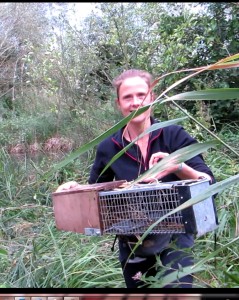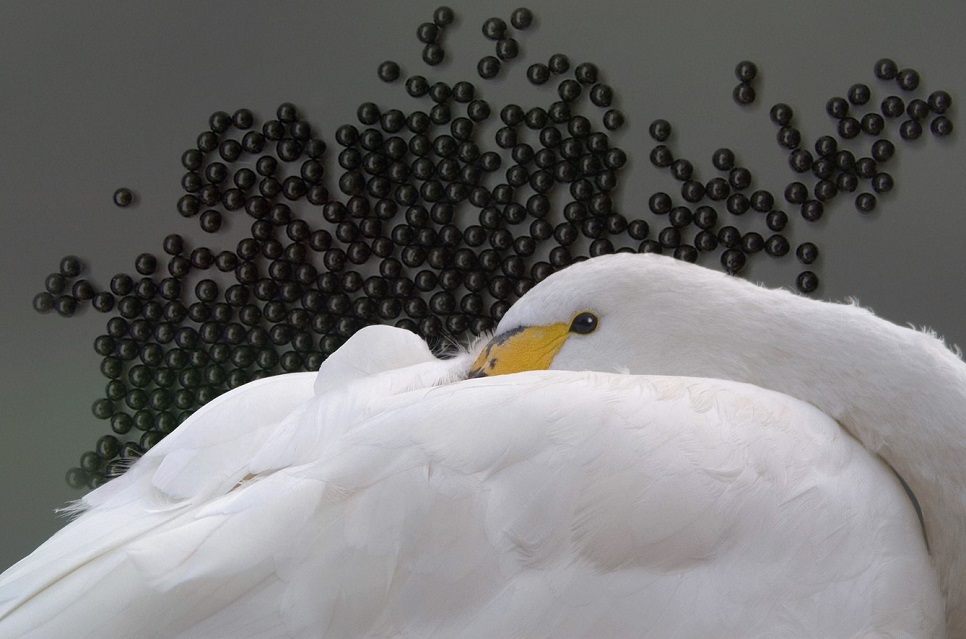University of Brighton goes on Vole Patrol
Sept 23: ROWENNA BAKER was at Arundel Wetland Centre last week to survey our water vole population with help from her students from University of Brighton’s Biology and Biomedical Sciences Division and WWT volunteers. The team was last here in April for another of their bi-annual sweeps of our water vole population in the Wetlands Discovery area of the reserve. Rowenna is collecting data on the water voles for a study on gene flow and demographics of water vole populations for her Postgraduate Research. This study is funded by the Arun and Rother Connections (ARC) project.
The surveying team placed 50 cage traps around the Wetland Discovery area. The cages have a covered nest box area, lined with hay and stocked with apples, to give maximum comfort to the water voles when they are inside. The team checks the traps twice a day
– in the early morning and the late afternoon.

I went out last Wednesday afternoon to check some cages with Rowenna. When found a cage that had been triggered by a vole I placed a large bag over the opening and coaxed the water vole out with some gentle shaking. WWT volunteer David Burt then ran a small hand scanner over the vole in the bag. This scanner beeps if it detects a microchip. If the vole has been picked up during the survey before it would have been given a microchip - like those used on family pets. If it is a new water vole a licensed handler will also check the sex of the vole and pull a few strands of hair for a DNA sample. Students then released the water voles and refill the cages with fresh apples and straw. Yesterday the team found 40 new voles and had many recaptures from the spring survey. They even found an older vole from last September’s survey.
Among the wildfowl autumn has definitely taken hold and winter migrants are beginning to flock back to the reserve. Teal numbers are increasing with over 80 onsite today, along with 40 gadwall. Individual snipe are making appearances along the waters edge and herons are still around most mornings, fishing near the Ramsar Hide. Kingfishers are showing well with 3 sightings this morning.
Paul Steven’s weekly Wildlife Sightings column appears in the Chichester Observer, the Littlehampton Gazette, the Bognor Regis Observer, the Shoreham Herald and the Worthing Herald.

